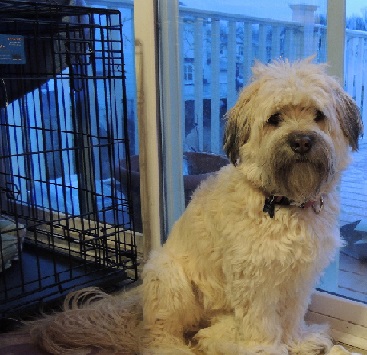Traveling With Your Pets
So you're planning a trip and the thought of leaving your pets behind is not acceptable to you. Although, we specialize in taking care of your pets in your own home while you're away, I understand that sometimes you simply cannot leave them. If that's your situation, a little planning and preparation is needed to make traveling with your pets secure and comfortable for both you and them.

Preparation before Traveling
Make sure rabies vaccines are up to date and have your vet check your pet's overall health and assess his or her ability to travel. Many states and nations require you to carry a current Certificate of Veterinary Inspection for each pet. Known by the initials CVI, this document must show that your pet was examined within 10 days prior to beginning the trip. Your vet is familiar with CVIs and knows what is required. Some jurisdictions also require your pet to have embedded microchip identification. Therefore, several weeks prior to leaving home check with the authorities in the area which you plan to visit to learn specific requirements.
Whether you will be traveling with dogs, cats or both, prior to leaving home you will need to make your pet comfortable with any transport crates, leashes or harnesses that will be used on the trip. For crates or carriers, set the one you will use in the floor and put a small bit of food and water inside. You might also want to toss in your pet's favorite toy or blanket. Leave the door wide open and allow your pet to explore the interior at his or her leisure for a couple of days. After your pet appears comfortable going in and out, put him or her inside and shut and lock the door. Leave your pet unattended for a couple of hours inside the crate. You may have to repeat this action multiple times before your pet becomes comfortable with the door shut. Therefore, you should start crate training several weeks before time to travel if this is your pet's first experience with crates and carriers.
Automobile Travel
The American Veterinary Medical Association, (AVMA), recommends that cats always be transported in a cage or animal carrier. This serves multiple purposes. It prevents your cat from getting under the driver's feet and it prevents your cat from escaping during rest stops. It also serves to make your cat feel secure when the vehicle is in motion. Add a favorite toy, pillow or blanket to the inside of the carrier for comfort.
Whether traveling with cats or dogs or both, be sure and stop the vehicle at least every two hours for exercise. Many cats do not do well in new environments. Therefore, be aware that your cat may try to escape if let go in unfamiliar surroundings.
For excessively long road trips, be sure to provide your pets with water regularly and small meals.
Air Travel
If you take your pets on a trip that requires air travel, prepare well in advance to meet the airline's requirements. Choose the right transport crate. Defective transport crates are the number one reason animals escape or suffer injuries during air transport, according to the AVMA.
Get one that is tall enough to allow your pet to stand and turn around without scrunching. The crate also needs to be long enough so that your pet can lie down comfortably if he or she wants to stretch out.
Be sure the crate is labeled with your personal information: name, address, and phone number. Write the destination of your flight clearly on the label, along with the words "Live Animal." Make sure too, that the top of the crate versus the bottom is clearly obvious. Although, you may want to cover the transport crate to help your pet feel more secure, be sure not to block adequate ventilation, as the crate may be transported with ordinary luggage. The AVMA also recommends that you carry a photograph of your pet with you on the plane in case the label on the transport crate gets torn off.
Let personnel know that your pet is also on the flight when you're boarding the plane.
Other Forms of Travel
State regulations greatly restrict traveling with pets on buses and trains. This, of course, does not apply to service animals. If you're going to be using a bus or train to get around, it's probably best to hire a pet sitter or kennel your pets while you're away.
Overnight Lodgings
Some websites mark certain hotels as "pet friendly" only for guests to find out at the service desk that this is not so. Therefore, make sure you speak directly with staff at your hotel or other accommodations before leaving home with your pet.
Just remember that proper planning and preparation BEFORE you leave home is the best way to ensure having fun traveling with your pets.
Editor's Note: See the related article Moving With Your Pets.
